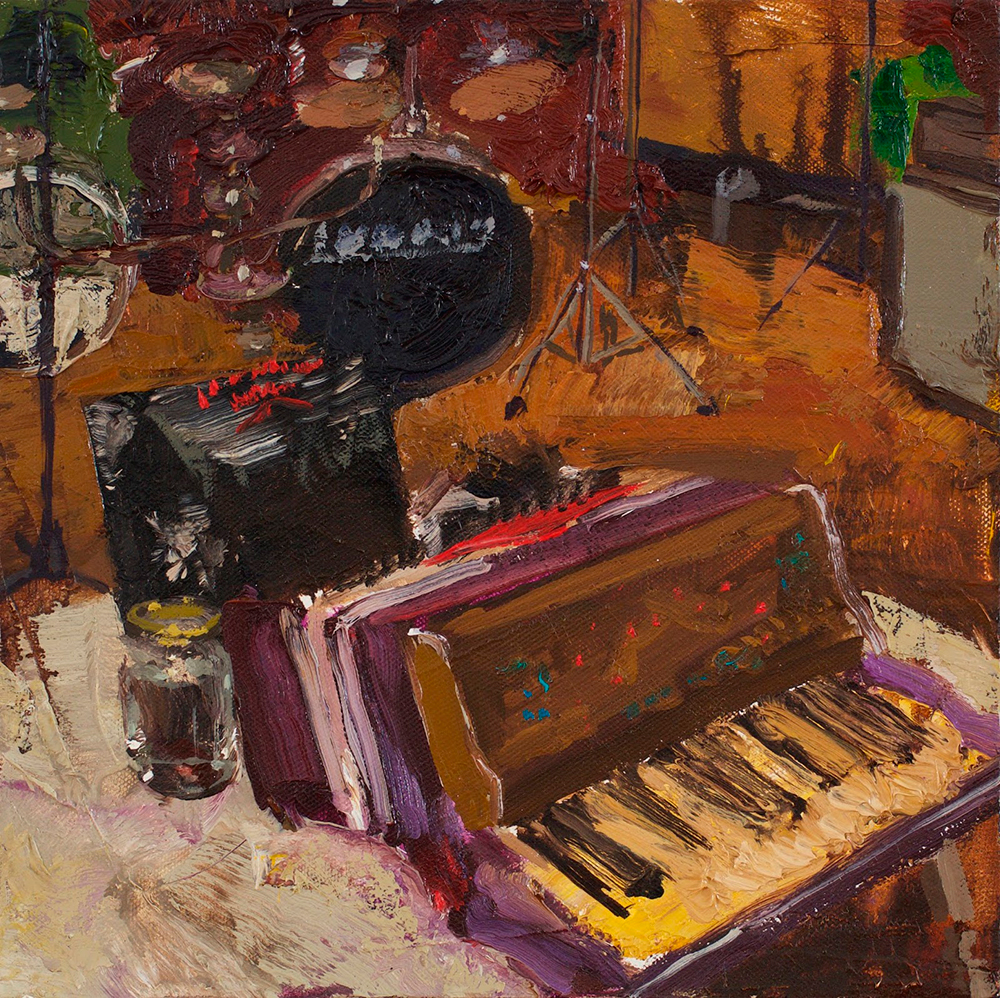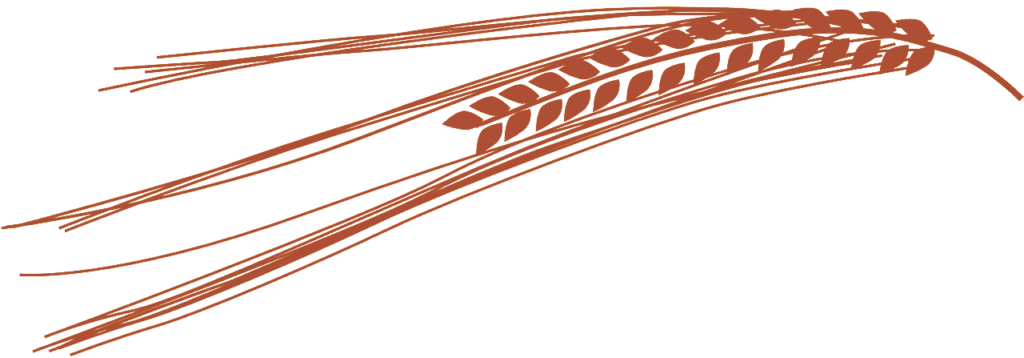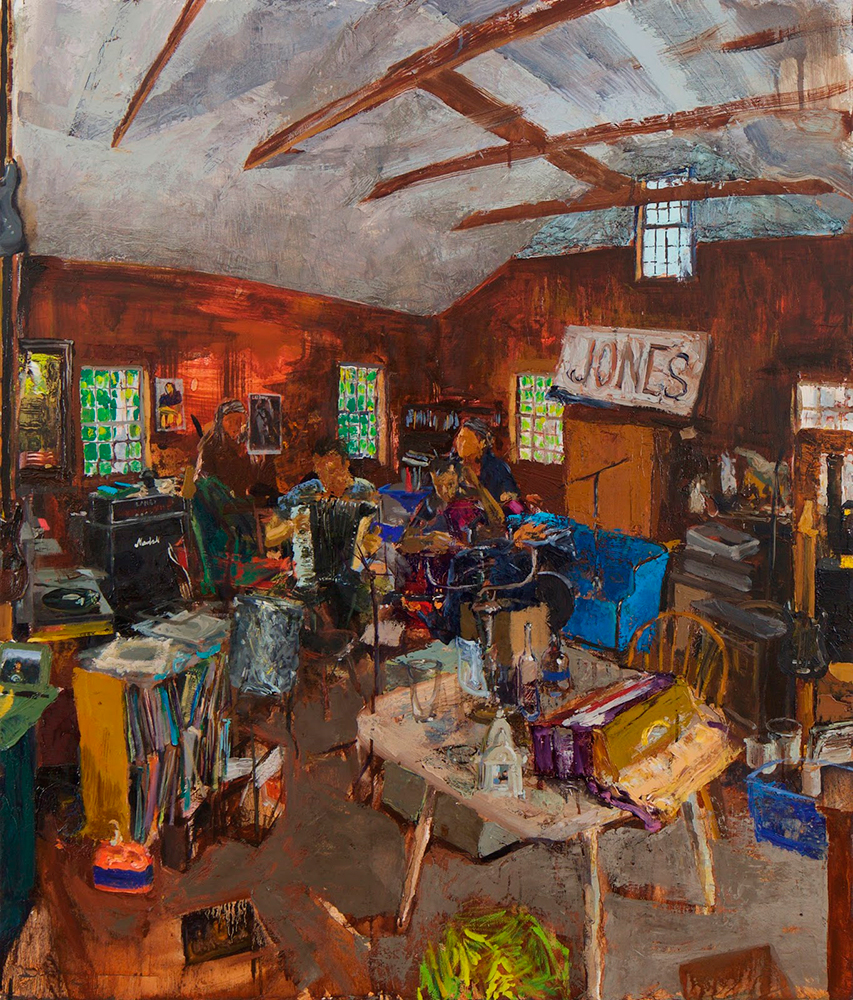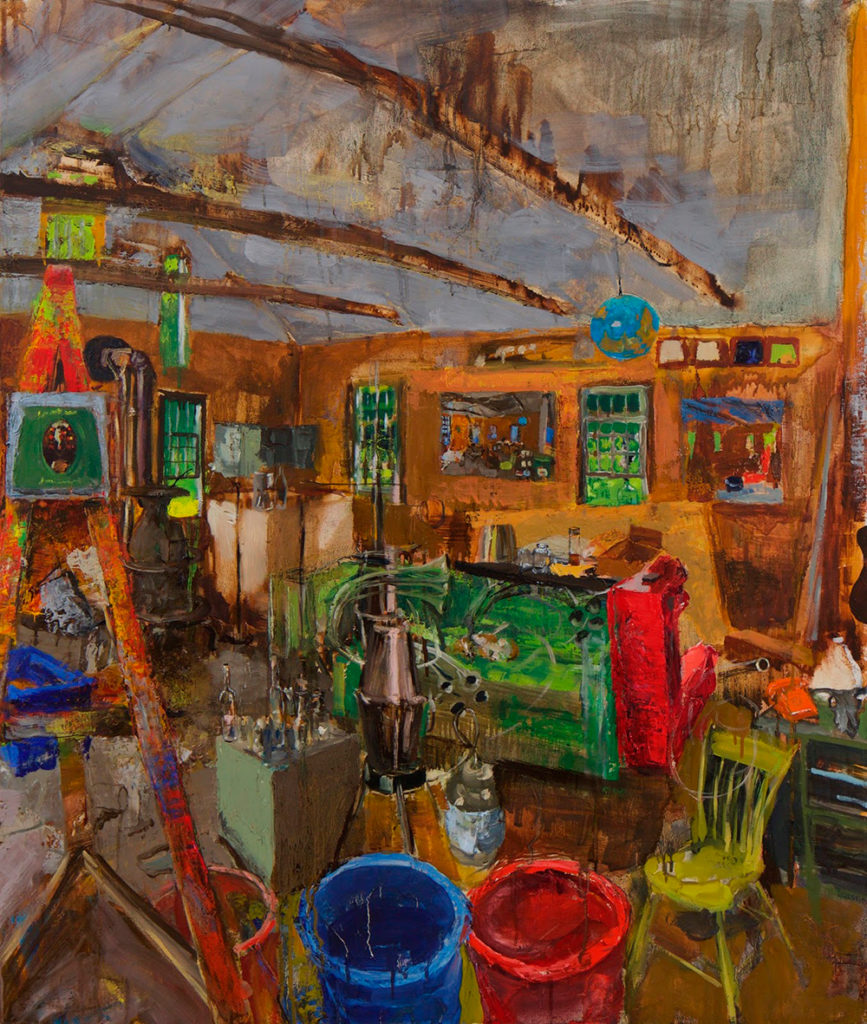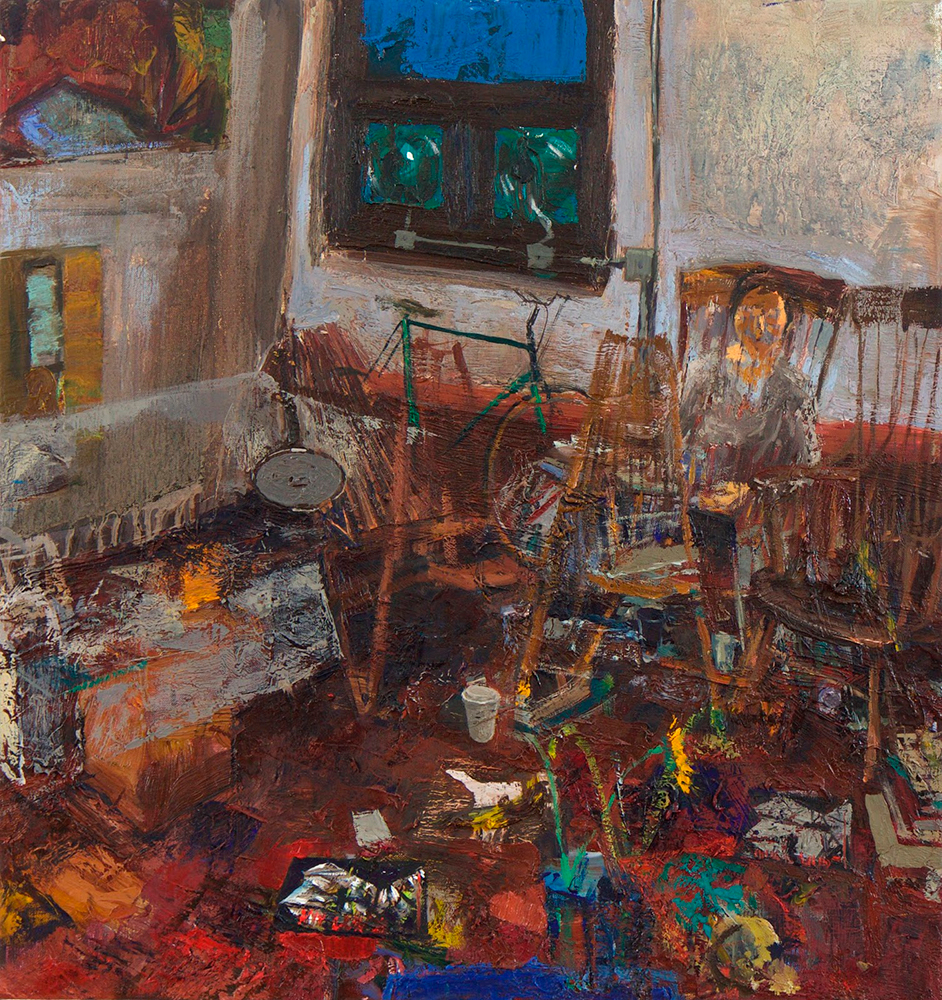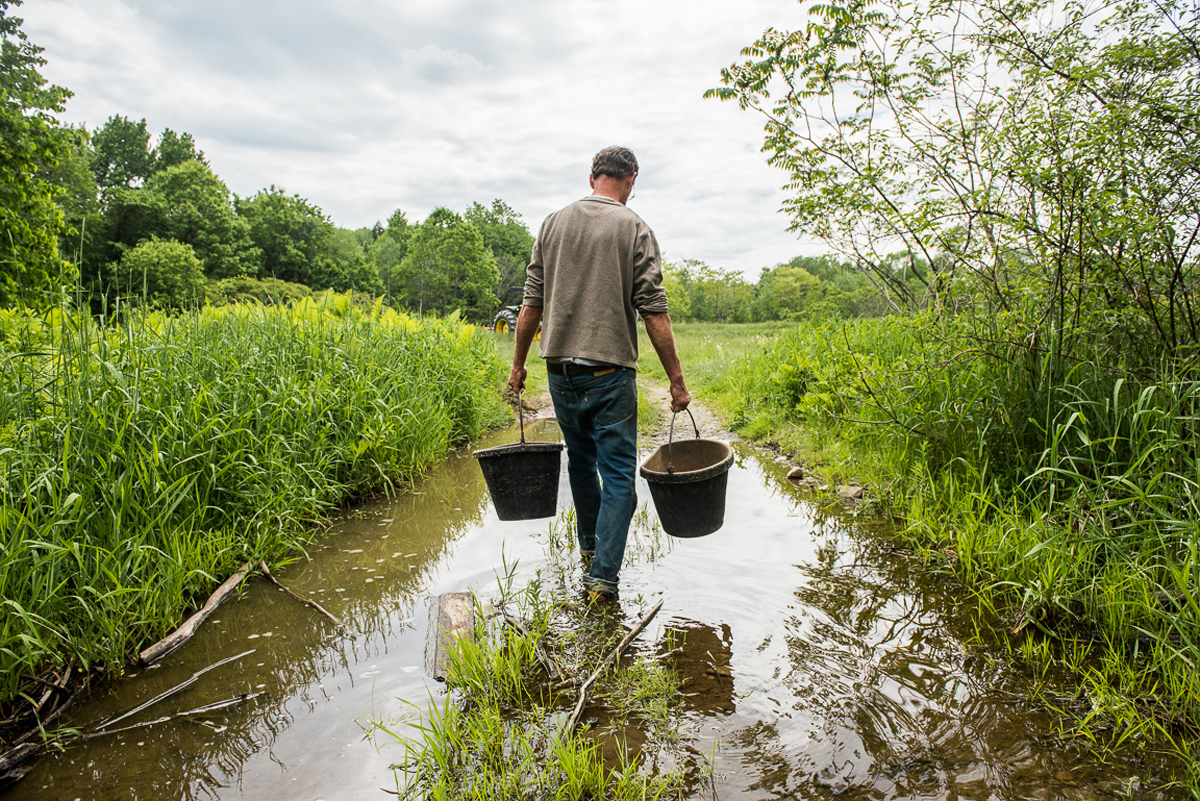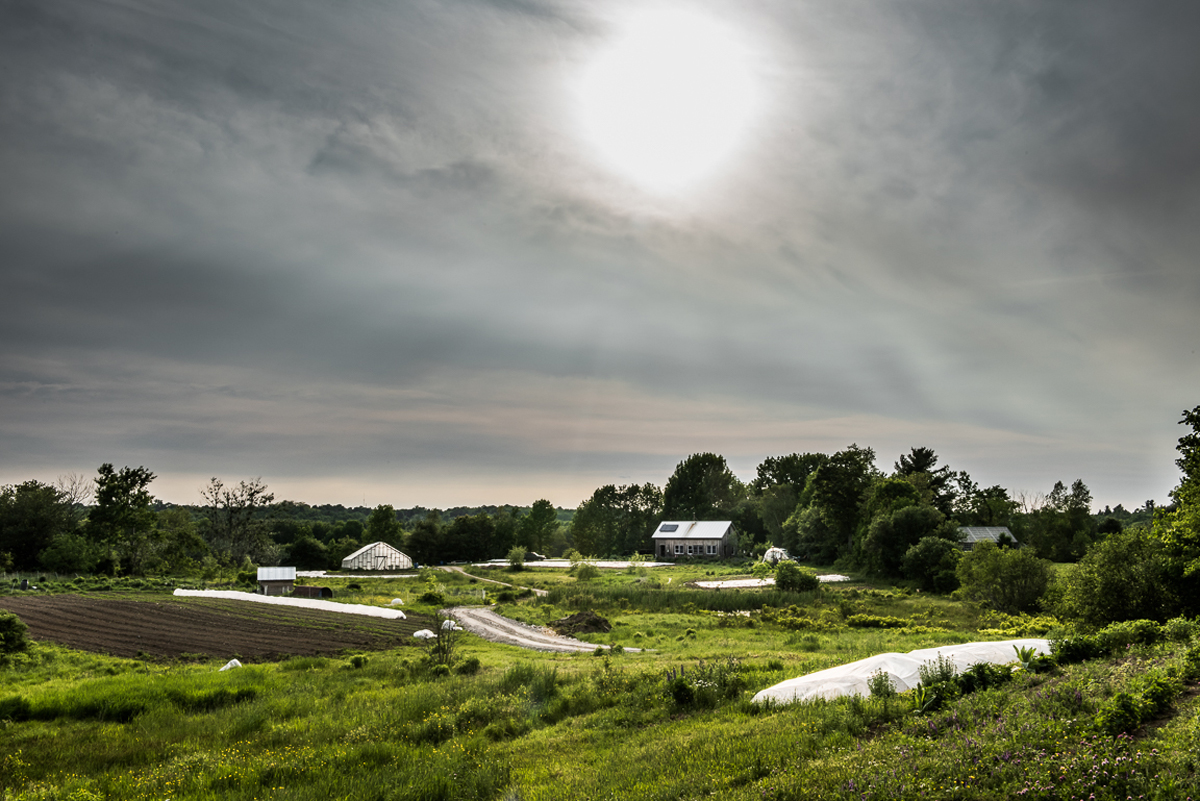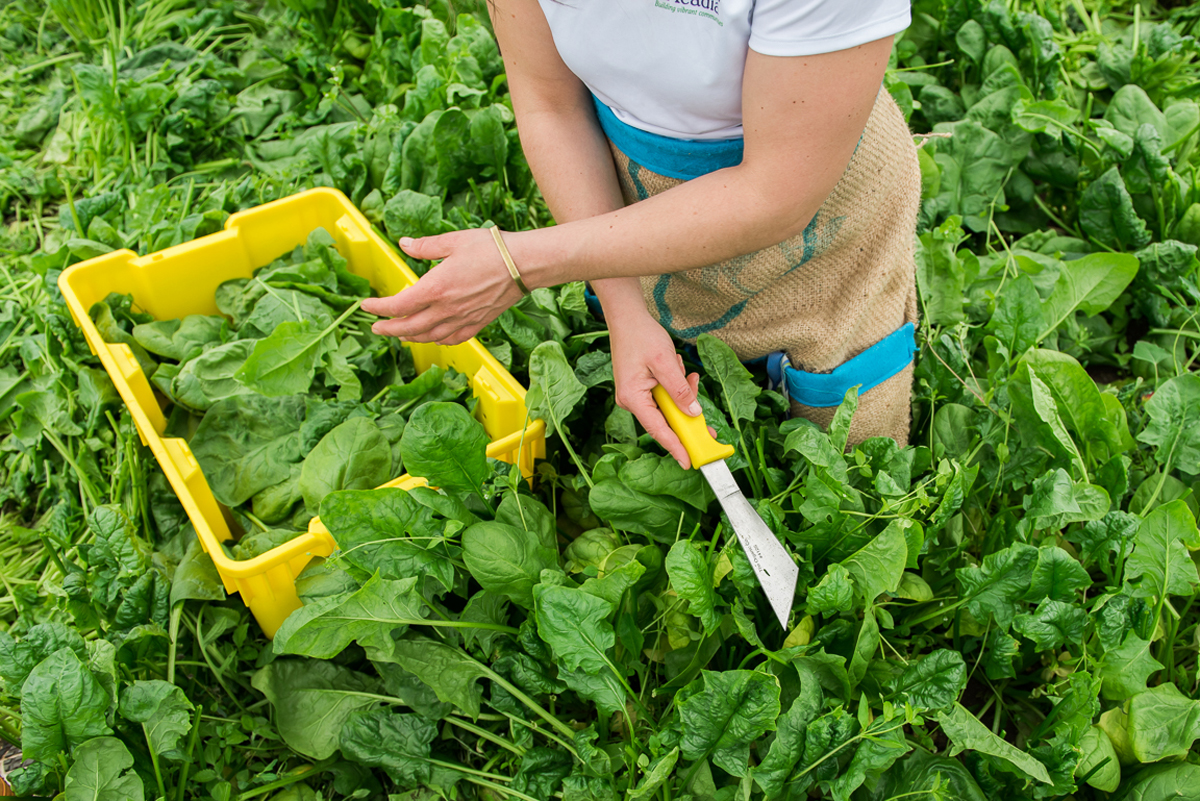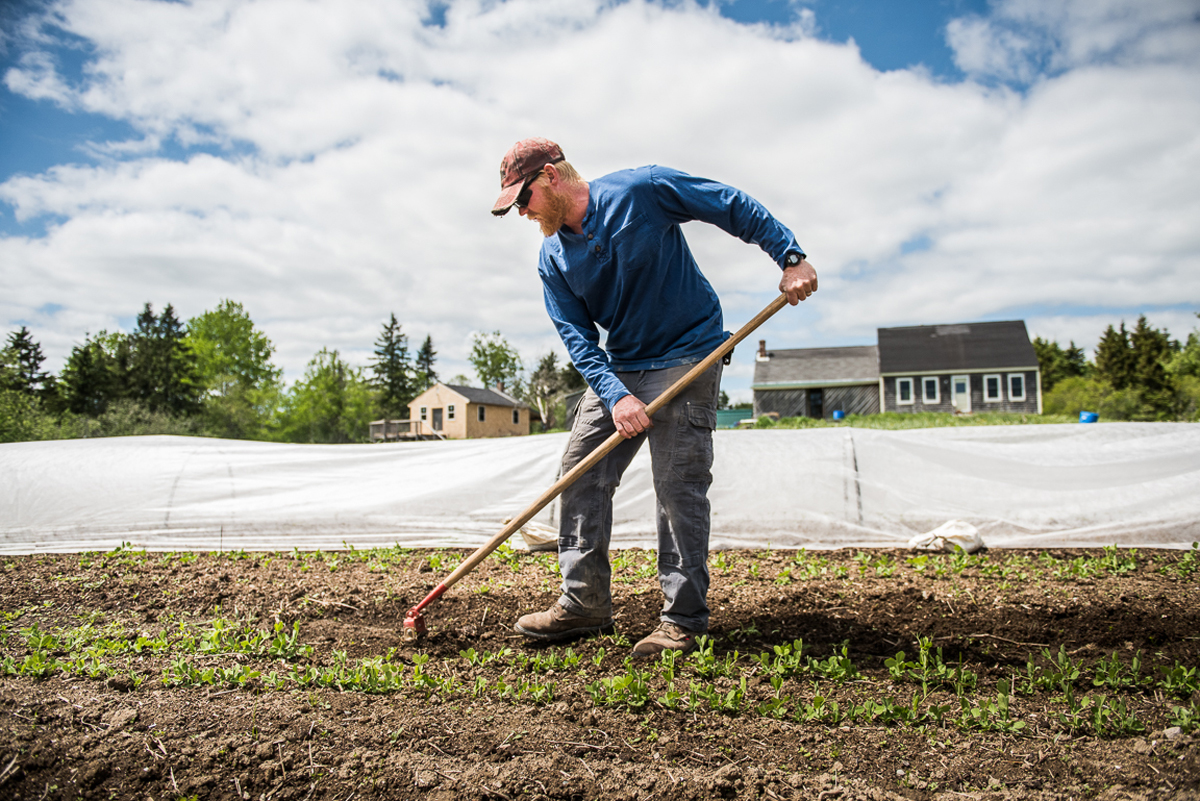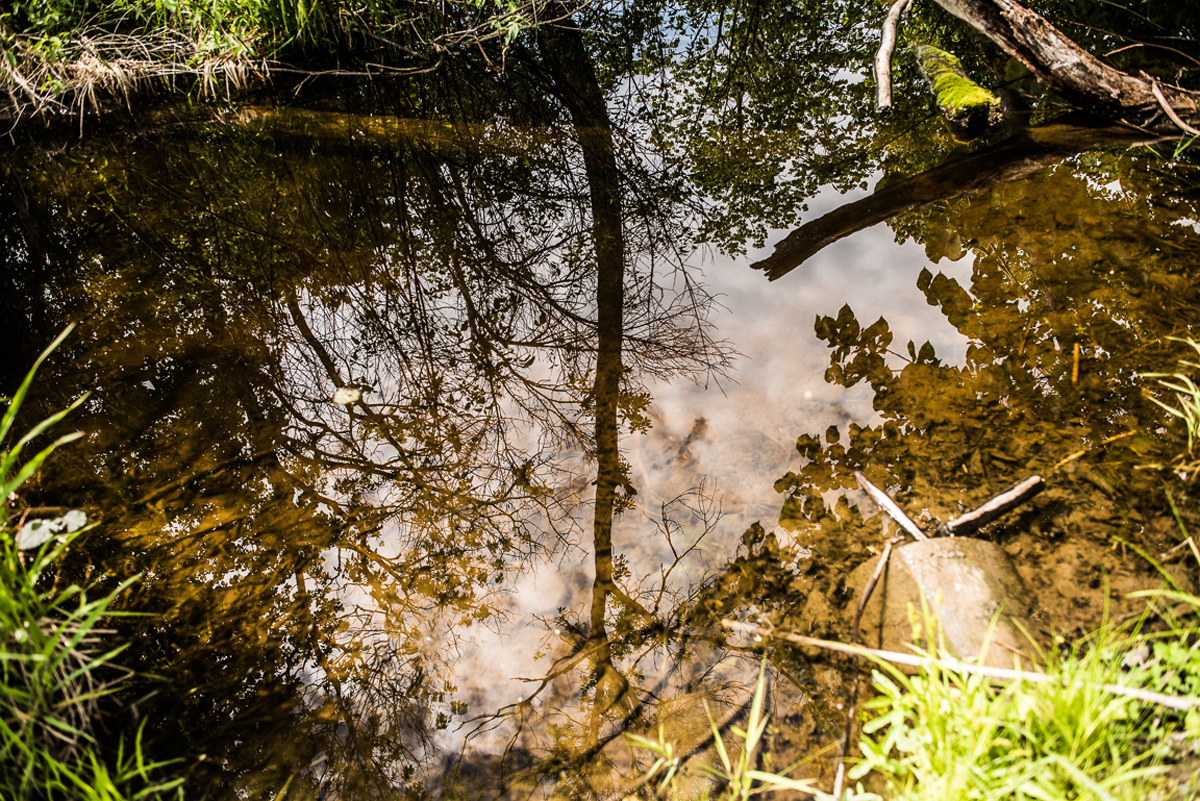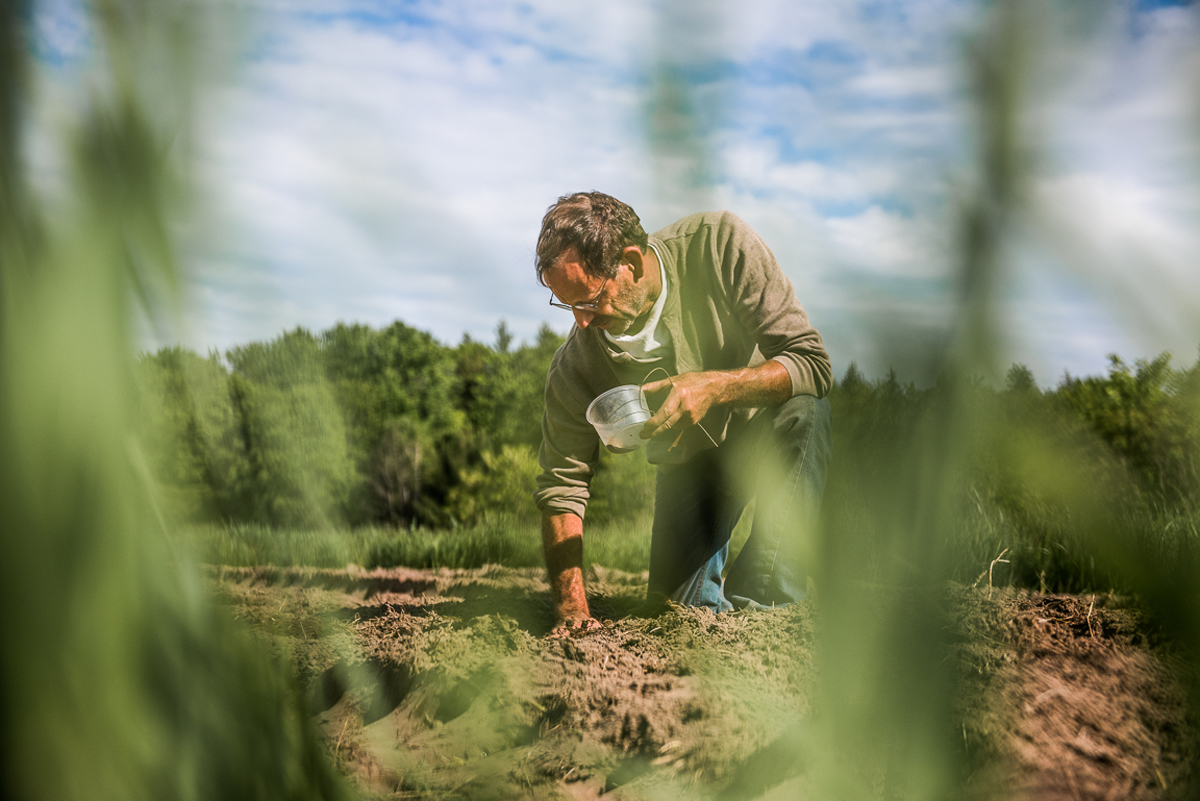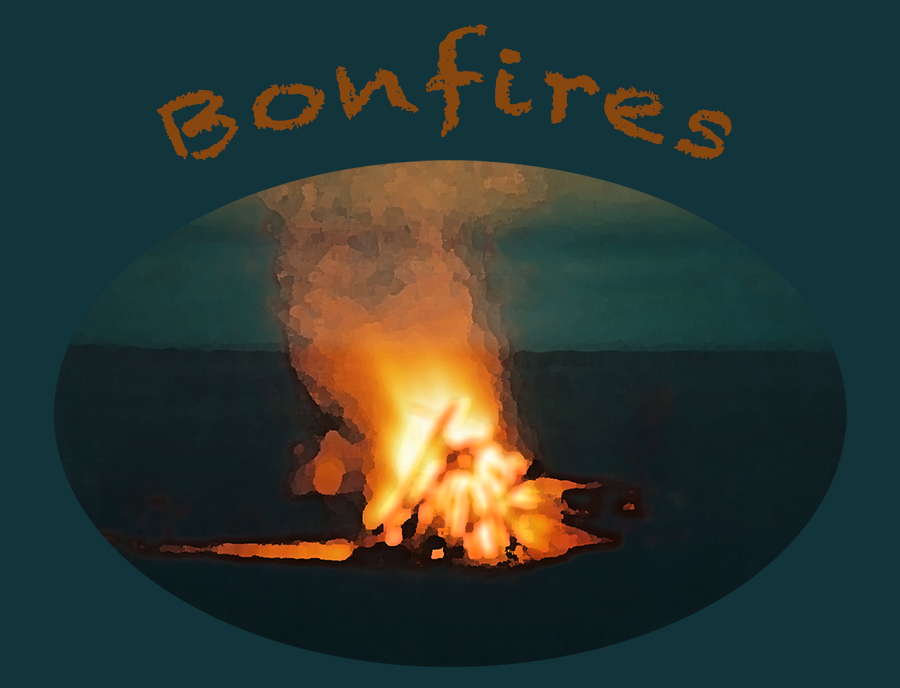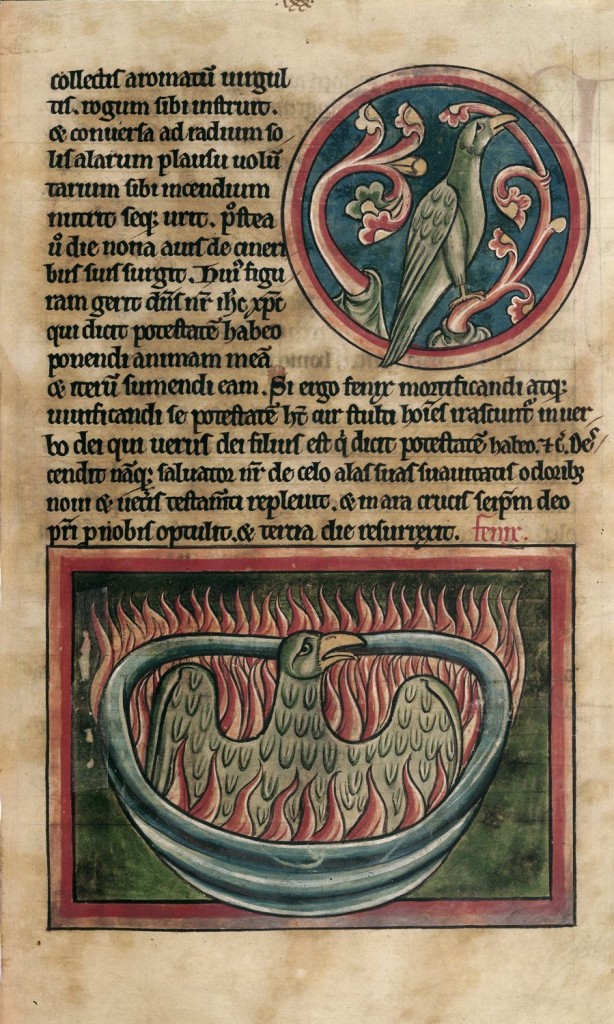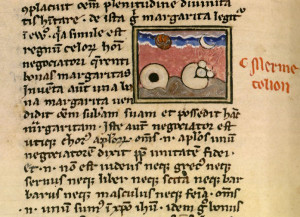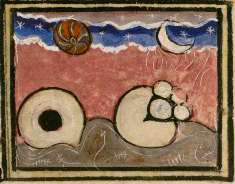The Other: Skaar and Kelly

Anneli Skaar / Mark Kelly
The Other
A Story in Five Parts to Accompany The Other, a photo collage by Anneli Skaar and Mark Kelly.
E PLURIBUS UNUM
It might come as a surprise to some that, even in the 1700s, really important arty stuff was being designed by committee.
The responsibility for creating a great seal for the newly formed United States of America was not immediately handed over to an artist — it was referred to three guys who were on the committee to draft the Declaration of Independence: Benjamin Franklin, John Adams, and Thomas Jefferson.
In a testament to their wisdom, they soon realized that it might be a good idea to consult with a professional designer. They engaged a recent immigrant as a consultant, Pierre Eugene Du Simitiere, from Switzerland by way of Jamaica. Together, the four of them made several mock-ups, yet each of their proposed designs was immediately and unequivocally rejected by Congress.
In subsequent years two new committees were formed to attempt an approved design concept and both groups hired consultants to do the artwork. In March of 1780, a mediocre effort was submitted, created by Francis Hopkinson, the designer of the flag we know as the Stars and Stripes, but it was rejected. In May of 1782, William Barton, a twenty-eight
year-old heraldry designer, submitted his version of the third committee’s ideas. It was rejected. It wasn’t until Charles Thomson took up the challenge in June of 1782, that the Great Seal as we know it was formed.
An Irish-born immigrant, patriot, and an outspoken critic of slavery, Thomson was a wise man, well-respected by his political peers. Thomson wrote a letter to Thomas Jefferson in 1785:
“It grieves me to the soul that there should be such just grounds for your apprehensions respecting the irritation that will be produced in the Southern States by what you have said of slavery. However, I would not have you discouraged. This is a cancer we must get rid of. It is a blot on our character that must be wiped out. If it cannot be done by religion, reason, and philosophy, confident I am that it will be one day by blood.”
He was also involved in the local Delaware and Shawnee Native American tribes, studied their customs and policies, and even assisted in their councils.
Thomson was the Secretary of the Continental Congress for fifteen years. The United States was still without a president
and would be until 1789. The government was run by the Continental Congress and functioned both as the Executive branch and the Legislative branch. There was only a President of Congress, who was elected by Congress. Thompson’s job as Secretary combined the duties of Department of State, Secretary of the Senate, and Clerk of the House of Representatives. Thomson’s name was synonymous with honor and wisdom, and his signature on congressional documents would be met with respectful murmurs of, “Here comes the Truth.”
Thompson drew his rough sketch of notion for the Great Seal without group input. He incorporated elements from all three previous groups’ ideas. The drawing was quite good for one who wasn’t a professional artist, loosely sketched as if on a napkin, and the image is undeniably recognizable as the version we see today on everything from money to passports. His design was proposed to Congress entirely on the basis of its written description, only later to be realized visually by a variety of different artists. His text reads:
On a field … Chevrons composed of seven pieces on one side & six on the other, joined together at the top in such wise that each of the six bears against or is supported by & supports two of the opposite side the pieces of the chevrons on each side alternate red & white. The shield born on the breast of an American Eagle on the wing & rising proper. In the dexter talon of the Eagle an Olive branch & in the sinister a bundle of Arrows. Over the head of the Eagle a Constellation of Stars surrounded with bright rays and at a little distance clouds. Motto In the bill of the Eagle a scroll with these words E pluribus unum.
The eagle’s head points to its right, as freedom favors peace. The written proposal was presented to Congress on June 20th, 1782, and immediately ratified. Never codified by law, E pluribus unum was the unofficial motto of the United States until 1956 when Congress passed an act adopting “In God We Trust” as the official motto of the country. This was at the height of McCarthyism and the Cold War. What is not commonly known is that the words E pluribus unum had been established very early on in the first committee’s sketch as a potential motto for the new nation, and it was inspired by a surprising source.
Some believed the Latin text came from Cicero’s De Officiis, Circero’s treatise on human obligations and his thoughts on basic family and social bonds as the origin of societies and states. “When each person loves the other as much as himself, it makes one out of many.”
However, it is more widely assumed—and more easily proven—that it was appropriated from “The Gentleman’s Magazine,” a well known and very popular London publication since the 1730s, read by the colonies’ educated class well into the 1770s. On its title page were the italicized words E Pluribus Unum, accompanied by a woman’s hand, offering a nosegay of flowers.
The flowers are an assortment; none of the illustrated blooms are the same and they are tied together with a loose knot of ribbon. It is a surprisingly delicate offering, a symbol of the
ideal of coexistence, unity, and also individuality. Its visual symbolism is a far cry from the powerful grasp of eagles’ talons.
The text next to the bouquet reads in Latin—as the hand hands the gift from one to the other— “Out of many, one.”
THE STARLING
One spring day in 1890, a man and a group of his supporters let sixty birds loose in New York City’s Central Park. Forty more birds would follow the next year. The man’s name was Eugene Schieffelin, and the birds were European Starlings.
Eugene had decided to populate New York with every bird mentioned in the works of William Shakespeare. Why this seemed like a good idea to him and his helpers remains a mystery. What can be safely asserted is that Mr. Schieffelin was quite the romantic and had way too much time on his hands. It is worth noting that Starlings are only mentioned once in Shakespeare’s plays, in Henry IV. Starlings have excellent mimicry skills—both in behavior and in calls, making them incredibly adaptable. Shakespeare’s lines are for
Hotspur, the charismatic Sir Henry Percy, as he plans to drive his enemy crazy with the constant mention of the name of a foe:
But I will find him when he lies asleep, And in his ear I’ll holla ‘Mortimer!’ Nay, I’ll have a starling shall be taught to speak
Nothing but ‘Mortimer,’ and give it him To keep his anger still in motion.
I assume that the sixty birds, having made the long, arduous journey by boat from Europe, would have first been shocked to find themselves set loose in the bucolic setting of Central Park, itself only created a little over forty years before—a vast green lung in the midst of the growing metropolis. The 1890s was a time of anxiety: economic, political, and social—boundaries stretched to the limits by the massive influx of immigrants. The air would have already been touched by the filthy, black smoke introduced by rapidly expanding industry. In 1890, the population of the US was 63 million, a number that was compounding fast, wheels and engines churning.
However unlikely, I do like to imagine the starlings first getting their bearings and then rising far up, circling the park en masse, only to swoop down and around again, in that beautiful formation that starlings are known for: the murmuration.
Murmurations are named for the murmuring sound, presumably the sound the wings make as the birds swirl like a black cloud. Sort sol, the black sun, as the Danes call it—is when a million starlings might hover at dusk over the low—lying bogs and marshes and completely block out the sunset. The tips of their wings touch as the flock swoops left, then right, then left again—always following the lead of their closest neighbors, the formation designed to confuse predators. The shape shifts in the sky like a liquid or a mesmerizing fluid dance. I’ve never seen a murmuration but I imagine it looks like a brewing storm.
The problem is, for all its adaptability and sociability within its own species, the starling is a problem bird. As starlings raid other species nests to deposit their own eggs, the population grows. And grows. So successful was the European starling in occupying Central Park at the turn of the century that by present day, it has invaded every state in the union and beyond all borders north and south. Today, the population of starlings in the United States is 200 million. It was once suggested that a tasty starling recipe might be created to take a bite out of the population, but unfortunately starlings taste like crap.
In the Sonoran desert of Southern Arizona, the starlings have become a serious problem. The species have ousted the Gila
woodpecker out of their nesting hollows in the saguaro cacti—the 200-year-old giants who have witnessed centuries of shifting borders and contentious claims to the ownership of these lands—their prickled arms thrown up in exasperation.
This was Mexico not so long ago. The Gadsden Purchase of 1853 secured land for further expansion west with a transcontinental railroad along the southern border. The signatory on the purchase, James Gadsen, was the grandson of Christopher Gadsen, the general and politician who designed the iconic “Don’t Tread On Me” flag during the American Revolution—the coiled rattlesnake then considered as much a symbol of the spirit of the United States as the eagle. That flag has enjoyed something of a resurgence lately, co-opted by the conservative far right. The serpentine trains for which the Gadsden Purchase secured the rails, still undulate slowly across the desert, laden with steel containers.
Along the most deadly desert corridors of the Arizona border with Mexico, poor migrants flock to begin their emigration north. It didn’t use to be like this, the funneling of people through a deterrent section of the border —a hostile terrain where Nature itself can easily and casually kill them. Border patrol checkpoints are now set up strategically along the main roads and within the 100 mile rule of border enforcement, forcing migrants to walk up to 80 miles into the desert
to avoid them—deep into wildlife preserves and military bombing ranges. In the past decade, thousands have died along these corridors, but the exact numbers are unknown. The organic matter of a human being decomposes completely in three weeks under the Sonoran sun; bones turn completely to dust in one and a half years. Many bodies are never found, simply absorbed into the dry earth like water. Of those that are found, many are never identified and will never be reunited with their families. The cooperation and coordination between humanitarian aid groups and law enforcement has broken down over the past few years, due to the current administration’s directives. As a result of the new policies, there are fewer migrants but a higher number of deaths.
The civilian militia are prevalent as well, encouraged and validated by the increasingly audible murmurs of the current administration. You see NO MILITIA signs in small town storefronts here. No one locally wants the people with the big trucks and the fake machine gun turrets mounted to their flatbeds taking the law into their own hands. A few years ago, members of a militia group targeted a local man, mistakenly suspecting him of drug smuggling. They shot him, his wife, and his 8-year-old daughter. The wife survived.
Starlings are fair game and may be shot on site. They don’t belong here, they say. They have sailed across the ocean and now they fly right across our borders and into our homes.
They are taking food, they spread filth. They are foreigners who must be stopped.
Others say they that this is nothing new. They say the Europeans have invaded this land and displaced those who were here before them and aggressively claimed all this land for themselves. Shooting these birds won’t help much. It will make things worse.
In the words of William Shakespeare, it keeps our anger still in motion.
ST. MICHAEL
As we process prints out in the desert, outside a small border town, we feel a bit vulnerable. Every third car is border patrol. We know we aren’t doing anything wrong, but our very presence seems illicit.
“I really hope no one stops,” Mark says. “Oh, I don’t know. Maybe it would be interesting. I mean, we’re not doing anything illegal. It’s just art.” Mark shakes his head. Sure enough,
a white truck with its distinctive green line slows down and stops on the trail. A cloud of red dust billows up behind it as it brakes. The window rolls down. I grab the bull by the horns and walk up to talk to the agent before they even get out of the car. Surprisingly, it turns out to be a woman, in her sixties, perhaps Latina. A velcroed strip of webbing above her jacket pocket reads: G. RAMOS.
“What are y’all doing out here?” she asks. Friendly. Wary.
“We’re artists. We’re making prints. Cyanotypes. We use water and the sun to process them. About 20 minutes for one print.” I hesitate before I ask: “Would you like to come see us make one?”
“Sure.” She unbuckles and steps out of the vehicle. 5.11 tactical boots on the ground. She hitches up a duty belt brimming with gear: Handcuffs, baton, taser, radio, Maglite, 11-round magazine clips and a Beretta 96D “Brigadier” pistol. We walk over to the processing area. Mark, nodding hello, has quite possibly shit his pants.
“See, this is what we do,” I say, showing her the watercolor paper. It’s greyish-green like the landscape, having been exposed to the Arizona sun. I hand it to Mark.
“Mark?” “What?” “Go ahead and show agent Ramos what we’re doing.” Mark dunks the crisp, thick sheet of paper in the pan of water to stop the exposure, and rinses it carefully with his fingers. He adds some hydrogen peroxide and the image of the starling blooms instantly from grey to a deep blue. Agent Ramos looks delighted.
“You see here, it’s a starling. An invasive species. But what is an invasive species, really? See the talons? It has the Virgin of Guadalupe and a coyote bone in one and the St. Michael pendant and the arrows in the other. Like the Great Seal of the United States. Both sides of the coin, you know?”
Agent Ramos looks thoughtful. “Like your badge,” I add.
“May I photograph it?” She hesitates for a moment.
“Okay. Why not.” Mark is holding his breath.
“You see these symbols?” I say, pointing at the soft patch, “It’s like this seal in the photo.” She nods—sideways—as though to agree, kind of. We say our goodbyes and finish our printing. We are relieved.
She seemed to like us. The area along the border of Arizona and Mexico has the highest presence of law enforcement in the entire country. In addition, the Yuma sector has the Marine training center, and close by is the Army bombing range. I-8 running east-west through Yuma, is studded with checkpoints.
When you are in line at a checkpoint, you drive up to someone who is looking at something—gauging someone—far behind you when he says, hello. His split-second evaluation of you is already done. “Have a great day.” Judgment made.
St. Michael is the patron saint of the military and law enforcement. This archangel traditionally has four duties: To wage battle against evil; to save the souls of the faithful; to protect the People of God; and to lead the dead from this life and present them to God for judgment. Medallions and pendants show the image of St. Michael wearing armor, wielding a sword or spear, and standing triumphantly on a serpent or some other symbol of the devil. He is often shown holding the scales of justice or the Book of Life. St. Michael is also the patron saint of the border patrol. Deter, Detect, and Apprehend.
“They rotate the border patrol officers often because they don’t want them to become too friendly or familiar with the
locals,” one man told us in Arivaca, just north of the Mexican border. “If they know you, it’s more difficult to be tough.” He lives in a town overrun by law enforcement, with a temporary checkpoint that feels more and more permanent.
It was late when we landed in Yuma earlier this week. We dumped all of our things in our motel rooms and didn’t have to drive further than a few blocks through the stripped down concrete slab of downtown before we saw the bar with the neon sign. It looked exactly as you’d hope such an establishment would look—like a rusty box of cheap junk in the very back of the garage, lit up with the bright blinking colors of a child’s toy. Strangely familiar, yet altogether strange. The kind of bar you can find anywhere, if you look. Two red felt-covered pool tables, and the accumulated bric-a-brac arranged like elaborate religious shrines amongst the bottles. Only a few people were at the darker end of the longish bar, and a cheerful but tired looking lady who was probably younger than she looked brought us beers and tequila shots. Short of driving the short distance across the border to San Diego, geographically we couldn’t be much farther away from Maine.
Later, a few more people filled the seats at the long counter. A group of young men, clearly military or border patrol, ended up on our end, their professions betrayed by their bold and cocky demeanor, good posture, and clean cut hair, high and tight. Loud but cheerful, they had a alpha vibe that you
felt could dial either way. They might just come over and slap you on the back, their tan and powerful bodies crushing you in a bear hug. Alternately, a conversation could go wrong and someone might end up thrown over the bar and into the glassed-in stagecoach model above the extensive tequila selection. Mark and I are both a bit wary around this type of energy. It’s like we were sweating empathy and Bernie slogans out of our pores.
There was some activity on the other end of the bar and then Lana, the bartender, came back down to our end and handed us all small plastic tokens for free drinks.
“The gentleman at the end of the bar is buying this next round,” she said.
Mark went to the jukebox in the corner with a wad of dollar bills, and began to line up a playlist. Mark moonlights as a DJ, and his musical sophistication ranks above most mortals. The jukebox was digital, and the access to music was universal. He could choose anything. Pretty soon, a song started blaring out of the shitty speakers, one that had clearly never been played in here ever before, not at this dive nor on this particular strip, ever, in the history of Yuma. Lana perked up and nodded. “You picked that?” Reggae. An obscure 80s punk band. Soon, “Blue Moon” came on.
“What is this?” I asked when Mark came back to the bar, out
of cash. I was genuinely intrigued. The lyrics I knew, of course. But the wooden, hollow knocking, the splintered opening, and the soft cry of a voice was eerily unfamiliar.
“Elvis,” Mark said. “Probably his best recording ever and hardly anyone knows it.”
An older gentleman and his wife had moved up to our end of the bar to chat with the young marines at our end. He pulled out a couple of dollar bills and asked if there was any Johnny Cash on the jukebox.
“It’s coming,” Mark said. “It’s in the line up.”
The marines were gently flirting with the older man’s wife, who was giggling at all the attention, her crooked humpback resting against the bar. Her eyes sparkled. Her husband was a veteran and he started to ask questions of the youngsters who were billeted at the local Marine Corps Air Station.
“What do you guys do over there,” I leaned over and asked one of the men, the quietest one in the group. Young and a bit more shy than the rest, he reminded me of my son.
“Sweating and flying,” he said, “It’s just like Afghanistan here. Good for training. HEY! I’ll buy this lady a drink.” He pointed at me and I got another free drink chip. I had already
cashed in my first one for a fourth shot. Strangely enough, I felt completely fine.
Learning that we were from Maine, a marine named Justin cornered Mark. He wanted to know about lobster. How do you catch it? Was Mark a lobsterman? Mainers must all be lobstermen.
“No, no, no,” Mark had said. “I’m not a lobsterman. I do building work. Tile work.” “Do you build houses?” “I have built houses. In the past…but…I’m here as an artist–” “Could you build my house? Could I hire you? I need someone to manage the workers.” “Here? In Yuma?” Mark asked incredulously. “I don’t…”
“No, dude. In Texas. I’m totally serious, man. I don’t trust anyone. I trust you, though. You’re from Maine. You could come make sure my house gets built. Keep the workers in line and just make sure it gets done. Gimme your phone number. Here’s mine…”
I noticed Justin was wearing a small silver medallion. I knew what it was before I even asked. The oval silver St. Michael medallion gleamed on his chest like the moon.
COYOTES AND VIRGINS
“That was a coyote,” Mark says.
We’re driving the I-8 from Yuma, skirting the northern border of the Barry M. Goldwater bombing range. The road is endless; the landscape is an immutable backdrop of washed out grey green, like an old faded photograph. A rusty fence parallels us all along the way. It’s spiked, but doesn’t look particularly difficult to squeeze through. I’ve read that there are entire mock towns in the vast range contained by this fence, towns designed to look like middle eastern villages, with houses and mosques. Sometimes migrants stumble across these houses and use them as shelters, which for obvious reasons is risky in itself. Humanitarian aid workers need a permit to enter the area to leave water and supplies, or to recover bodies. It is a permit which is increasingly difficult to obtain. The number of corpses found in the 1.9 million acre range is generally considered to be vastly underreported.
I screech to a stop, squint at the image in my rear view mirror, shift to R for rewind and back up about 200 feet along the shoulder, to where the dead animal lies in the road. I’ve never seen a coyote before, not even in Maine. This one is flat as a mat, but strangely crushed as though it were still in motion, still running across the two-lane road. Mark makes a joke about Wile E. Coyote and an anvil and I laugh. As
we get closer we can see the bones and intestines pressed out between shreds of blood-matted grey fur. It’s not really the fierce animal I thought it would be, and that’s disconcerting. Both Mark and I stop joking. Maybe we’re both a little embarrassed at our flippancy.
In the noon heat the flies are ecstatic and buzzing all over it. We don’t know it yet, but the stench will stay with us for a long time on this trip. We poke around the side of the road.
Humanitarian aid is not a crime, but littering is, and besides trespassing, it’s often the argument against leaving water bottles in these areas. Also, water might just help drug mules get to their destination. This is true. The problem is that these couriers are often destitute themselves; the long journey by foot carrying marijuana on their backs is their hazardous and hard won ticket out. “We don’t judge the motivation,” the aid workers say. “We just want to prevent human suffering and death.” So they place water in the desert. Water for anyone who needs it. It doesn’t matter who the migrants are.
In January of 2018, the humanitarian organization, No More Deaths, posted a video on social media of Arizona border patrol agents slashing water bottles that had been placed in the desert. Mocking the videographer, they poured out the water gleefully on camera. A few hours after this film went viral, a man—Scott Warren, a professor at Arizona State University and a volunteer with No More Deaths—was
arrested for harboring migrants, a felony charge.
We’ll attend the court hearing this week. The defense will be filing a motion to gain access to evidence in this case—a request for the release of email records showing that this was a targeted arrest. We will be entering the courtroom, surrounded by 13 screens showing the Great Seal of the United States. The judge, after listening to both sides will ask the defense, without a hint of irony: “Where is it written that humanitarian aid is not a crime?”
Small tin or silver pendants bearing the image of the Blessed Virgin Mary as Our Lady of Guadalupe often accompany migrants on their journeys. The story goes that in 1531, near the village of Guadalupe, Mexico, the Virgin Mary appeared to an indigenous farmer named Juan Diego and asked him to build for her a house on a hill. He told the archbishop of this apparition and was not believed. So the Virgin Mary told the farmer to gather roses from the top of the hill to bring to the bishop. Although it was winter and roses were not in season, Juan Diego found them in bloom and collected the blossoms in his cloak, and when the roses tumbled out at the feet of the archbishop, a life sized brown-skinned image of the Virgin Mary was found on the inside of Jaun Diego’s cloak.
Mark and I find an unbelievable amount of junk along the strip of land between the road and the rusty fence. Stuff that seems unlikely to have been thrown 30 feet from a
moving vehicle. An incredible number of water bottles lie abandoned under creosote bushes, and I find a pair of cheap polyester pants. I’m tempted to check the pockets for a personal item, maybe a Guadalupe pendant or even a rosary, but I’m not enthusiastic about the prospect of discovering a scorpion or a spider in there. I read that as migrants reach the highway and catch the ride that their guide – or coyote – has arranged for them, they often discard all unnecessary belongings at the side of the road.
Protegernos, say the Guadalupe pendants. “Pray for us.”
“Look over here,” Mark says. He’s off to my right and is pointing to something on the ground. It’s glowing like a precious gem. It’s urine in a plastic bottle, glistening in the sun. The reality and desperation of this crossing is suddenly very evident, and Mark and I are silent.
Later, I send my son an image of the dead coyote on the road. He’s in Maine, and I promised to send him some odd photos from my trip.
“Oh. I thought a coyote would be bigger, like a wolf,” he texts me back. They are not so big, I explain. They are not much like wolves, more like dogs. They are strangely familiar.
THE DAHLIA
The dahlia is a particularly hardy genus of flower. Blooming well into October, when most flowers have succumbed to the cold here in Maine, the dahlia is unfazed by the cool autumn weather in the Northeast. I picked up a huge bunch at a stand just outside of town, and they look as enthusiastic as if it were a hot July day. The flowers of the forty-two species of dahlias can range from a two-inch tight pom-pom to a one-foot-wide dinner plate size. None of the blooms I bought were the same, and they were bunched together in Ball jars filled with water. I bought several bunches, so seduced was I by their variety and bright colors.
The dahlia is native to Mexico, and their tubers were originally cultivated as food and as medicine by the Aztecs, who called them “water pipe flowers,” but the practice faded after the Spanish conquest. The word pinnata, derived from the Latin word pinna, means “wing,” and the strong hollow stems can easily support even the largest of these feathery blooms.
In 1789, at the same time that Mexico’s neighbor to the north was instating its new constitution, the Director of the Botanical Garden in Mexico City sent this beautiful, native flower to Antonio Jose Cavanilles, the director of the Royal Gardens of Madrid. After some trial and error, Cavanilles was able to grow the flower consistently and successfully.
Cavanilles named the plant for Anders Dahl, a popular
Swedish naturalist whose work in hybridization had paved the way for the dahlia’s success throughout Europe as botanists, taxonomists, and growers sent documented and undocumented seeds to France, Holland, and Great Britain. Soon, there were more than 85 species, and it became more and more difficult to differentiate one from another. Eventually they would be classified by two color groups: Group I (ivory-magenta) or Group II (yellow-orange-scarlet).
There were dahlias for sale in Nogales, the mountain city split in two along Arizona’s border with Mexico. Mark and I had headed there from Tuscon in the early morning. We drove over the mountains of Route 82 and stopped to stare slack-jawed at an isolated parking area where hundreds of border patrol trucks were fenced in with barbed wire and surrounded by some of the most beautiful, desolate mountain landscape we had ever seen. By the time we dipped down into the outskirts of Nogales, it was 9:00 am and well into a bustling Wednesday morning.
Nogales used to be one city. In 1918, a Mexican civilian crossed back into Mexico after avoiding interrogation on the U.S. side and all hell broke loose, resulting in what is known as the Battle of Ambos Nogales. Fueled by anger on the Mexican side due to the killings of border crossers by the U.S. Army, there was a gunfight and even the Mayor was shot while he waved a white handkerchief tied to his cane. The
precise location of the official border at the time was vague at best, but in the aftermath of the battle the first permanent border fence was built down the middle of the city.
Today there is Nogales, Mexico, and Nogales, Arizona. The wall is huge, almost out of scale with a town that seems small and almost quaint.
Mark and I had been told of a good place to park our rental car on the U.S. side so that we could walk into Mexico. So distracted were we by the massive, red-rusted steel fence snaking its way right up against houses along the hillside off to our left, that by the time we got our bearings, we had been funneled through a one-way gate and were face-to-face with a smiling officer.
I buzzed down my window.
“Good morning, officer” I said, sheepishly. “Where am I supposed to park so I can walk over to the Mexican side?” I hoped I didn’t sound too idiotic. Mark was rolling his eyes.
“Señora, you are in Mexico. Bienvenidos!” He pointed me toward a parking spot just beyond the gate.
“Well, that was easy,” Mark said, climbing out of the car, stretching, and looking around for somewhere we could grab a quick breakfast amongst all the cheap store fronts. I was dumbfounded, and keenly aware of the fact that our vehicle was not actually insured in Mexico. On the wall in front of the car the Great Seal of Mexico, formed in steel and painted with bright colors, welcomed us. The Mexican seal features an eagle, its talons grasping a snake and a cactus. The imagery refers to the legend that the Aztecs would know where to build their city when they saw an eagle eating a snake at the top of a lake. The lake in the seal is represented by the Aztec symbol for water, atl tlachinolli, which really has a dual meaning that means war—water and scorched earth.
After a quick breakfast of huevos with chorizo consumed under the watchful eyes of a plastic Virgin of Guadalupe statue, we survived a friendly assault by the salesmen of the local souvenir shops and were back in the car and ready to head north. One mile and a U-turn later we were in a bumper-to-bumper line to return to the United States.
Window washers, toy and candy hawkers, newspaper salesmen, paraplegic beggars and flower sellers, strolled and cajoled among the cars inching their way toward the checkpoint. It took two hours. Mark got a large plastic Guadalupe statue.
“What a life,” I said to Mark. “Can you imagine having to do this every day?” One particularly scrappy kid was at our
window with a pile of local Mexican newspapers. Mark rolled down his window and bought two. After disappearing for a while the boy returned, opened the page of the newspaper to the sports section and wanted to discuss soccer with Mark, which they did at length.
An old man in a remote desert town some miles north of the border had told us about the migrants who regularly show up on his doorstep. They are invariably dehydrated and in need of urgent medical attention after the miles and miles of walking. A simple blister can become a death sentence in the desert. Desert bandits—often Mexican nationals themselves—rob migrants of their last resources. Some are raped or killed—sometimes by the very coyotes they paid to protect them. Some travel alone, with little to lose. Many begin their walk outside of border towns just like Nogales.
The man up north had told us, “Once I had three visits in three months. Younger people. Really kind, polite people, not all these drug smugglers you hear about. People who have been abandoned by their coyotes and who were pretty much done. In those situations you don’t have very much time to decide what you’re going to do. Once I saw a girl along the side of the road, and I picked her up. I knew I could get in really big trouble. She looked like a little kid, like she was fourteen. Sometimes in your life you are met with a choice that is fairly black and white. For me, I know what is the right thing to do for me. I know I can go to jail for it, but it’s an
obvious choice. I know people who feel the same way as I do, who are doctors and nurses and who can help.”
He continued, “We all talk about the Mexico and the United States, but we don’t talk about the third nation.”
The third nation is the one right on the border, he said. The third nation is where the dirt and dust intermingles over the line in the sand and the birds fly across migrating north and south as they have always done. It’s where students cross to go to school, people go to shop, and to work. Where the people know each other and know they are the same. The third nation is the Other nation.
Mark and I returned to the United States side of the massive fence at Nogales without incident. The blond agent who interviewed us was friendly but firm, giving Mark an extra once-over on account of his darker, olive skin, before waving us through. The American flag and its bright colors waved at us cheerfully from the parking lot of a McDonalds as we
drove north.
There’s an expression that was coined by Sigmund Freud in 1917, not that long before the Battle of Ambo Nogales: “The narcissism of small differences.” It’s a thesis which describes a pathology: the closer two communities or individuals are, the more they exaggerate the differences between them in order to retain their individuality. This happens in loving relationships, in consumer culture, in our relations with other nations, with those different than us. It happens at our borders, in regard to the other. If we see the other as part of ourselves, we feel we might lose our own identity.
In 1963, the Dahlia pinnata would be designated as the national flower of Mexico. It is a member of the family of Asteraceae plants, whose flowers look like one bloom with many petals. Asteraceae refers to its appearance of a star with surrounding rays. However, this type of flower does not have individual petals at all. They are actually made up of many, very small, separate flowers that appear as a singular beautiful bloom. It’s just an illusion, you see. They are all one.
00
Mark Kelly and Anneli Skaar recently completed a collaborative project at the Arizona/Mexico border around the themes of passports, identity, and compassion. Mark Kelly is a multimedia, visual artist, and educator. Anneli Skaar is a painter, graphic designer, writer, and the Creative Director at the Farnsworth Art Museum.












